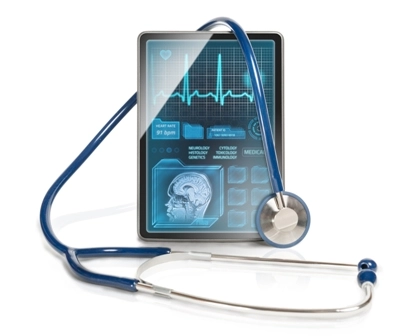Confront MDM & Medical Necessity Head On With This E/M Coding Primer

Strong documentation supports medically necessary care — it’s just that simple.
Does trying to grasp the differences between medical necessity and medical decision making (MDM) frustrate you? Many practices confuse medical necessity and MDM as the same, but you don’t have to make that mistake. Use our expert advice to learn how to distinguish from these two concepts.
Comprehend Nuances of Medical Necessity
To better understand medical necessity, look at these explanations from Medicare, The American Medical Association (AMA), and the Centers for Medicare and Medicaid Services (CMS).
In Title XVIII of the Social Security Act, Section 1862 (a) (1), Medicare defines medical necessity as “items or services, which are reasonable and necessary for the diagnosis or treatment of illness or injury or to improve the functioning of a malformed body member.”
The AMA defines medical necessity as “healthcare services or products that a prudent physician would provide to a patient for the purpose of preventing, diagnosing, or treating an illness, injury, disease, or its symptoms in a manner that is: (a) in accordance with generally accepted standards of medical practice; (b) clinically appropriate in terms of type, frequency, extent, site, and duration; and (c) not primarily for the economic benefit of the health plans and purchasers or for the convenience of the patient, treating physician, or other healthcare provider.”
CMS emphasizes the importance of medical necessity when it calls it “the overarching criterion for payment in addition to the individual requirements of a CPT® code.”
Understand the Meaning of MDM
Along with history and examination, MDM is one of the three key components you use when choosing the correct level for an evaluation and management (E/M) service.
The CPT® 2017 manual defines MDM as “the complexity of establishing a diagnosis and/or selecting a management option.” There are four levels of MDM: straightforward, low complexity, moderate complexity, and high complexity.
Within each MDM level, the physician determines the number of possible diagnoses or management options; the amount and/or complexity of the data to be reviewed; and the risk of significant complications, morbidity, and/or mortality.
Important: The documentation must support that at least two of the three above elements were met for an E/M service to qualify for a certain level of MDM. Adding to the history level and the examination level, in most cases (established and subsequent service codes need only match one of these elements), will determine the final E/M service code.
Why MDM/Medical Necessity Difference Matters
Although it’s common for people to confuse MDM and medical necessity for the same concept, the guidelines are very clear, says Suzan Hauptman, CPC, CEMC, CEDC, senior principal of ACE Med group in Pittsburgh, Pa.
“Medical necessity is the overarching criteria for all services — not just E/M,” says Hauptman. “Medical decision making is only one component of an E/M. They are not the same.”
Hauptman further reiterates her point.
“They [MDM and medical necessity] sometimes walk hand-in-hand, but don’t have to,” says Hauptman. “By suggesting the MDM is the medical necessity, coders could be down-coding services unnecessarily.”
It’s crucial to understand the difference, according to Marcella Bucknam, CPC, CCS-P, COC, CCS, CPC-P, CPC-I, CCC, COBGC, manager of clinical compliance with PeaceHealth in Vancouver, WA.
“Medical necessity should drive the amount of history and exam that is performed,” says Bucknam. “Medical decision making is all about the conclusions and decisions made after that history is gathered and the exam is performed.”
Bucknam further explains why knowing the difference between medical necessity and MDM is important.
“No service can be billed at a higher level than is required by the medical necessity, no matter how much work was done and no matter how much documentation is in the record,” says Bucknam. “If the physician does a comprehensive history and physical for a patient with an ingrown toenail, the medical necessity still does not allow a higher level of service to be billed.”
In contrast, with MDM, you’re trying to identify and rate the physician’s thought process during the exam.
“It’s an effort to determine how many factors had to be taken into consideration and how much risk was involved between the current visit and the next time the patient would be seen,” says Bucknam. “Sometimes this is rather low, but you might not know that the decisions would be low complexity without assessing the patient.”
Put Your Coding Skills to the Test
Apply what you’ve learned about medical necessity and MDM with this example from Bucknam: An established patient with Chronic Obstructive Pulmonary Disease (COPD), renal insufficiency, and mild congestive heart failure presents for a follow-up for these conditions. The physician takes a comprehensive history including the current status of these three chronic illnesses and also a comprehensive Review of Systems (ROS) to assess how the patient is feeling. The physician notes whether there are any indications of side effects from the treatment, any new problems he should be checking for, and he reviews and updates the medication information. Both the HPI and ROS indicate that the patient is doing well.
The physician then performs a comprehensive physical exam including vital signs, examination of the nose and sinuses for any infection or irritation, auscultation of the lungs, auscultation of the heart, checks for any costovertebral angle tenderness, palpation and auscultation of the abdomen or ascites or other changes, examination of the skin, and examination of joints for any swelling or weakness. Although comprehensive history and exam were medically necessary, there are no new problems or conditions, current problems are stable, there are no changes in care, and the provider only reviewed the lab tests.
Solution: MDM would be a limiting factor on the level of this service, but since all of the history and exam elements for medically necessary and established patient visits can be based on any two of the three key components, this encounter can be billed as a 99215 (Office or other outpatient visit for the evaluation and management of an established patient, which requires at least 2 of these 3 key components; a comprehensive history; a comprehensive examination; and medical decision making of high complexity…) according to the documentation.
No modifiers are needed. Your ICD-10 codes would be COPD (J44.9, Chronic obstructive pulmonary disease, unspecified), renal insufficiency (N18.9, Chronic kidney disease, unspecified), and mild congestive heart failure (I50.9, Heart failure, unspecified).




